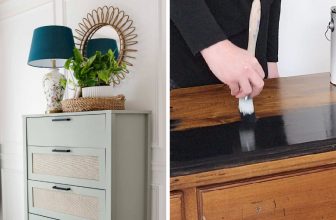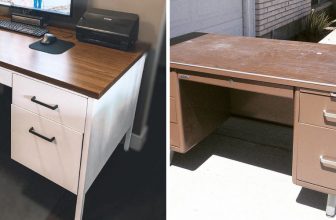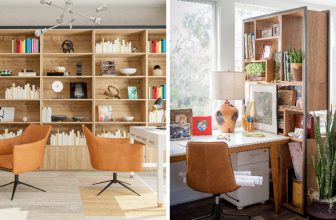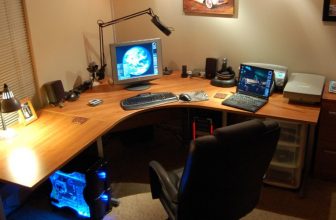How to Finish Butcher Block Desk
A butcher block desk is a versatile and visually appealing addition to any workspace or home office. Its natural and rugged charm, coupled with its durability, makes it a popular choice among furniture enthusiasts. However, to ensure its longevity and maintain its aesthetic appeal, proper finishing is crucial. In this comprehensive guide, we will explore the step-by-step process of how to finish butcher block desk.
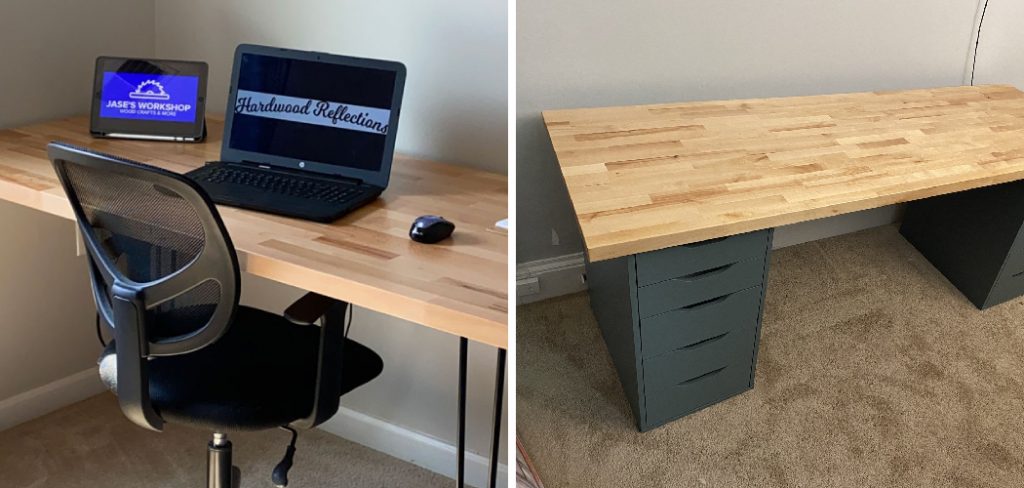
From preparing the surface and selecting the appropriate finish to applying the finish and ensuring a smooth, polished look, we’ll cover it all. Whether you’re a woodworking enthusiast or looking to personalize a pre-made butcher block desk, these techniques will help you achieve a professional finish, enhancing the natural beauty of the wood.
Let’s delve into the art of finishing a butcher block desk, turning it into a stunning and functional centerpiece for your workspace.
The Appeal of Butcher Block Surfaces
Butcher block surfaces have been a popular choice for countertops and desks for many years. Their durability, warmth, and unique character make them an attractive option for both residential and commercial spaces. But what exactly is butcher block? And how can you finish it to create a beautiful and functional desk?
Butcher block is simply a type of wood surface that is made by gluing together strips of wood, typically hardwoods like maple, oak, or walnut, into a solid panel. The strips are arranged so that the wood grain runs in different directions for added strength and stability. This construction method results in a surface that is both strong and visually interesting.
One of the major benefits of butcher block surfaces is their durability. They can withstand heavy use and are less likely to be damaged by sharp objects or high temperatures compared to other types of surfaces. This makes them ideal for a work surface like a desk, where daily wear and tear is inevitable.
Importance of Finishing a Butcher Block Desk
A Butcher block desk offers a stylish and durable addition to any workspace. Made from thick strips of wood glued together, this type of desk is known for its strength and long-lasting quality. However, without proper finishing, your butcher block desk may be susceptible to damage from spills, stains, scratches, or watermarks.
Finishing your butcher block desk not only protects it from everyday wear and tear, but also adds a beautiful shine and enhances the natural grain of the wood. It also helps to seal any exposed pores, preventing moisture from penetrating the wood and causing warping or splitting.
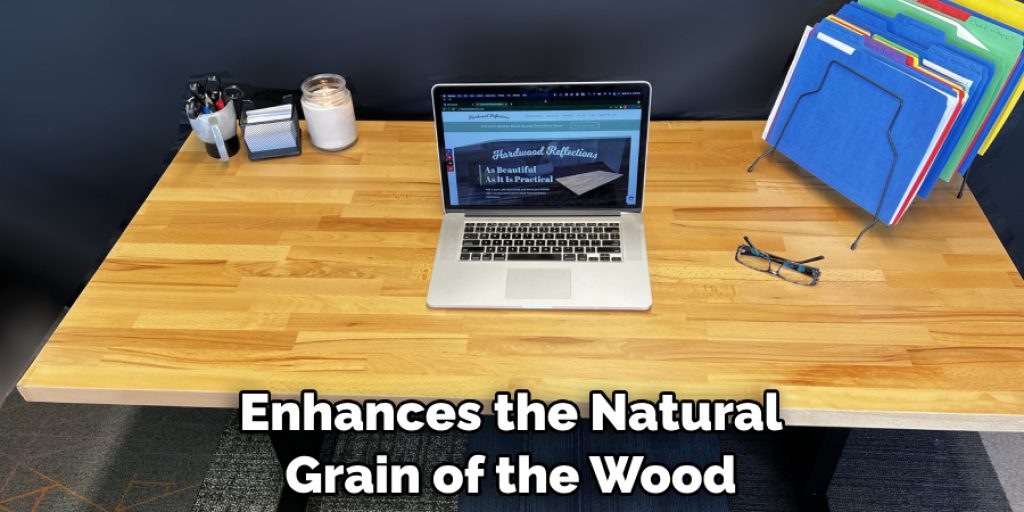
Moreover, finishing your butcher block desk creates a smooth surface that is easier to clean and maintain. This is especially important for surfaces used for writing or dining, as it helps to prevent ink or food stains from setting in. The added layer of protection also makes your desk more resistant to heat and chemicals, making it suitable for a variety of uses.
Apart from its practical benefits, finishing also adds a touch of personalization to your butcher block desk. You can choose from a variety of finishes, including oil-based polyurethane, water-based polyurethane, lacquer, varnish, or wax, depending on your desired level of protection and aesthetic preference. Some finishes even offer UV protection to prevent the wood from fading over time.
10 Steps How to Finish Butcher Block Desk
Gather Supplies:
Before you begin the process of finishing your butcher block desk, it is important to gather all the necessary supplies. This includes a high-quality wood finish, such as polyurethane or Danish oil; sandpaper, rags; and protective gear such as gloves and a respirator. It is also a good idea to have some mineral spirits or other solvent on hand for cleanup.
Prepare Surface:
Before applying any finish to your butcher block desk, it is important to prepare the surface by sanding it down with progressively finer grits of sandpaper until you reach a smooth finish. Be sure to wipe away any dust before continuing on to the next step. To achieve the best results, it is recommended to sand the surface with a final grit of 220 or higher.
Apply First Coat:
Once you have prepared the surface, it is time to apply the first coat of finish. Depending on which type of finish you are using, this may involve brushing or spraying on the product and then wiping off any excess with a rag. Allow this first coat to dry completely before proceeding further. Although it may be tempting to rush through this step, it is important to give the finish enough time to dry and cure properly.

Sand Between Coats:
After allowing the first coat of finish to dry completely, it is important to lightly sand between coats in order to ensure that each layer of finish adheres properly and provides an even final result. Use fine-grit sandpaper for this step and be sure to wipe away any dust before applying another coat of finish. This process not only helps to achieve a smoother surface, but also allows for better absorption of subsequent coats.
Apply Additional Coats:
Once you have finished sanding between coats, you can begin applying additional coats of finish until you achieve the desired look and level of protection for your desktop. Depending on which type of finish you are using, you may need anywhere from two to five coats in order for the best results. It’s important to follow the manufacturer’s instructions for your specific product when applying additional coats, as the drying time and sanding requirements may vary.
Allow Finish To Cure:
After applying all desired coats of finish, it is important that you allow them adequate time to cure before putting your butcher block desk into use or cleaning it with water or other cleaning products.
This curing time will vary depending on which type of finish was used but typically ranges from three days up to two weeks or more for certain types of finishes such as varnish or shellac-based products. It is important to follow the instructions provided by the manufacturer of your chosen finish for specific curing times and guidelines.
Buff Out Any Imperfections:
Once your butcher block desk has been given ample time for its finishes to cure, take some extra time buffing out any imperfections that may have occurred during application with steel wool or very fine grit sandpaper if needed and remove dust. Afterward, you can add another round of polyurethane to the surface for an extra layer of protection.
Clean Desk Top With Mineral Oil:
In order to keep your butcher block desk looking its best over time, use mineral oil regularly ( about once per month ). Simply clean off any dirt build-up with a damp cloth, then apply mineral oil liberally across the entire surface.
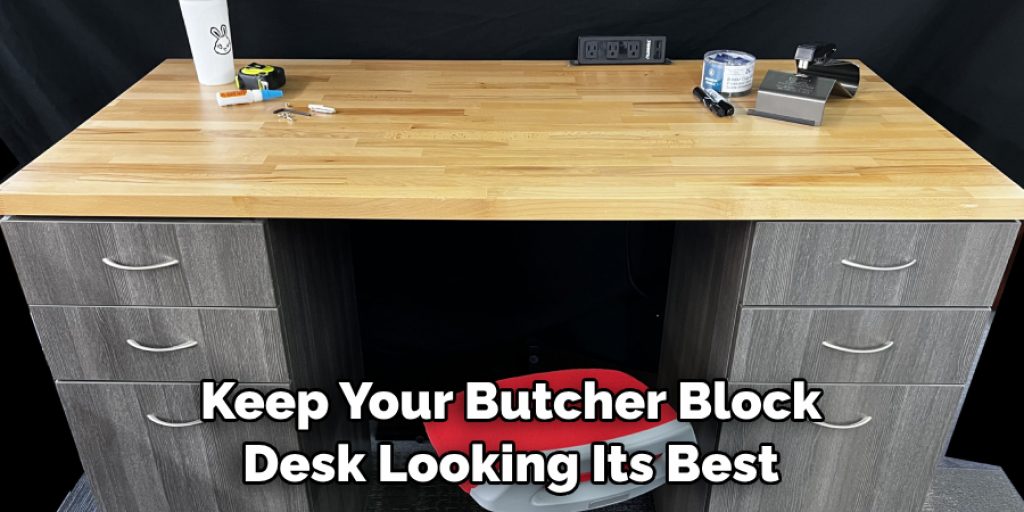
Wipe away any excess oil with a clean cloth. The oil helps to seal and protect the wood, preventing it from drying out and becoming damaged. It also brings out the natural beauty of the wood and can help to even out any scratches or imperfections.
Avoid Exposure To Heat:
It’s also important that you avoid exposing your finished butcher block desk top directly to heat sources such as radiators, stoves, fireplaces, etc. Excessive heat can cause warping and cracking in wood furniture pieces over time.
Make sure to keep your desk away from heat sources or use a protective barrier such as a placemat or trivet if necessary. While butcher block is known for its durability, it’s still important to take preventative measures to ensure the longevity of your desk top.
Enjoy Your Butcher Block Desk:
Last but not least, enjoy your beautiful new butcher block desk! With proper care and maintenance, this piece should last for many years – so get ready for plenty more hours spent working at home!
Things to Consider When Finishing Your Butcher Block Desk
Butcher block desks are a popular choice for many homeowners due to their durability and natural beauty. They are made from several strips of wood glued together, giving them a distinctive striped appearance. While these desks often come with a protective finish, they can benefit from an extra layer of protection to keep them looking great for years to come.
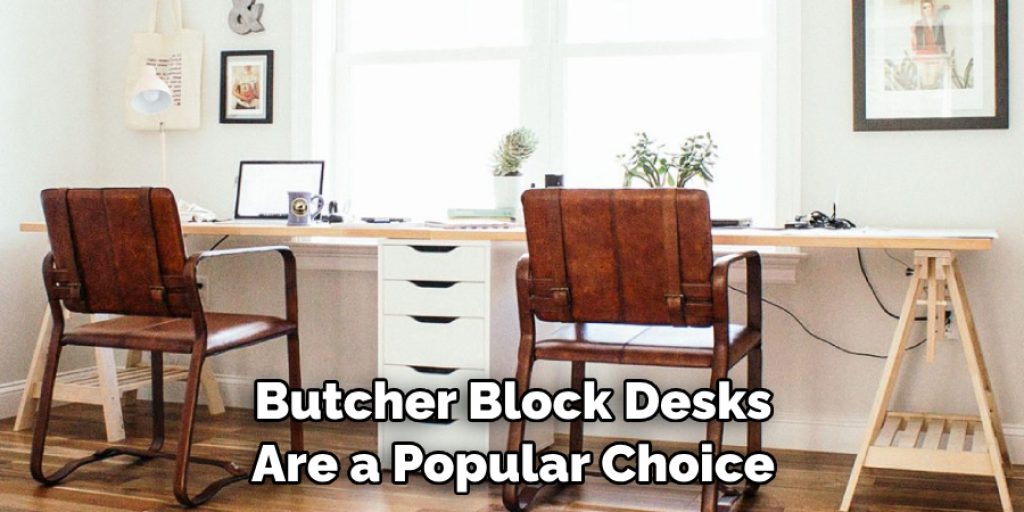
Here are some things to consider when finishing your butcher block desk:
Choose the right finish
When it comes to choosing a finish for your butcher block desk, there are several options available. These include oil finishes, such as linseed oil or tung oil, which help to bring out the natural beauty of the wood. Water-based polyurethane is also a popular choice as it provides a durable, protective layer while still allowing the wood to breathe.
Whichever finish you choose, make sure it is food-safe and non-toxic if you plan on using your desk for food preparation.
Sanding is key
Before applying any finish, it is important to sand your butcher block desk thoroughly. This will help to smooth out any rough patches and prepare the surface for the finish to adhere properly. Start with a coarse grit sandpaper and gradually work your way up to a finer grit for a smooth, polished finish.
Consider the usage of your desk
The level of use your desk will receive is an important factor to consider when choosing a finish. If you plan on using your desk for heavy-duty tasks or as a kitchen island, it is best to opt for a more durable finish. On the other hand, if your desk is primarily used for light tasks, such as writing or computer work, a less durable finish may be sufficient.

Common Mistakes to Avoid When Finishing Butcher Block Desks
When it comes to finishing a butcher block desk, there are plenty of mistakes that can be made. These mistakes can ruin the look and durability of your desk, making it important to know what they are and how to avoid them. Here are some common mistakes to watch out for when finishing your butcher block desk:
- Not Sanding Enough: One of the biggest mistakes people make when finishing their butcher block desk is not sanding enough. This can result in a rough and uneven surface, making it difficult for the finish to properly adhere. Be sure to thoroughly sand your desk before applying any finishes.
- Using the Wrong Type of Finish: Butcher block desks are often used as workstations or dining tables, which means they are exposed to a lot of wear and tear. It’s important to use a finish that is durable and resistant to scratches and stains. Polyurethane or varnish are good options for finishing a butcher block desk.
- Not Allowing Enough Drying Time: Another mistake people make is not allowing enough time for the finish to dry between coats. This can result in a tacky or uneven finish. Be sure to follow the recommended drying times for your chosen finish.
- Not Applying Enough Coats: Some finishes require multiple coats for optimal protection and appearance. Neglecting to apply enough coats can lead to a lackluster finish that is prone to damage.
- Using Cheap Brushes or Applicators: The tools you use to apply the finish can also make a big difference in the final result. Cheap brushes or applicators can leave streaks and brush marks, ruining the appearance of your desk. Invest in good quality brushes and applicators for a smooth and professional finish.
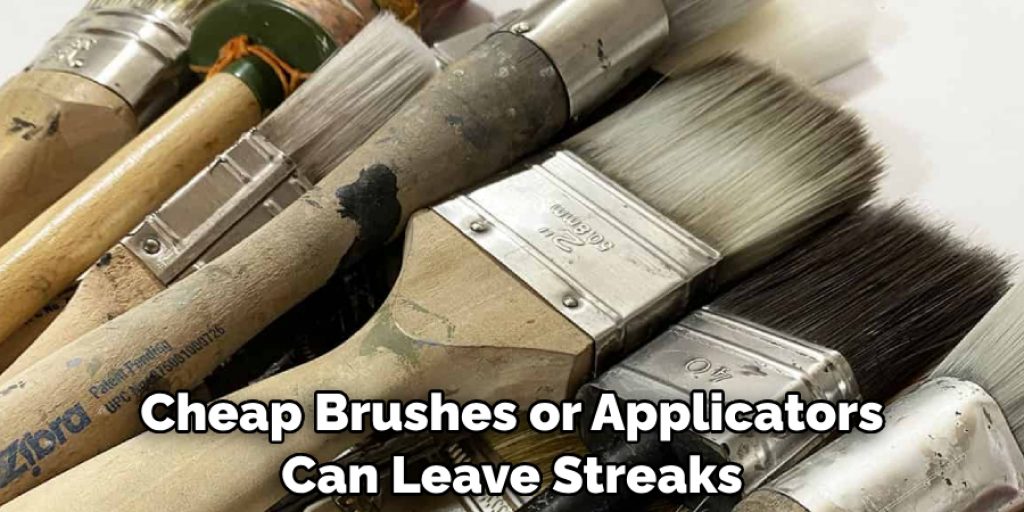
Conclusion
Finishing a butcher block desk isn’t as hard as it sounds. With the right planning, tools, and materials, you can complete the job in no time. Choose a finish that is both resistant to liquids and easy to maintain. The clear protective sealer can make your butcher block look new longer and will help to keep out spills or stains.
Additionally, use even pressure on the applicator when applying coats for a smooth finish. Along with those tips, be sure to properly prepare the surface with sandpaper for a better finish. Following these steps carefully and correctly will ensure you have an exquisite end result for your butcher block desk that brings years of durability to come. So get out there and get started on how to Finish Butcher Block Desk!

